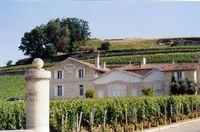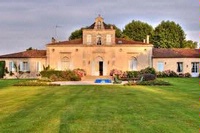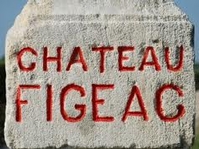Creators Syndicate
Once upon a time in America, Bordeaux was the beverage of choice for sophisticated wine enthusiasts. Today, you would be hard-pressed to find even one Bordeaux selection at a top-notch restaurant that wasn’t French.
 Once upon a time in America, Bordeaux dominated the shelf space of virtually every fine wine merchant in the big cities. Today, you would be hard-pressed to find more than a token handful of good Bordeaux chateaux on the retail shelves. And the farther away you get from New York and Los Angeles, the harder it gets to lay your hands on any bottle of Bordeaux, good or bad.
Once upon a time in America, Bordeaux dominated the shelf space of virtually every fine wine merchant in the big cities. Today, you would be hard-pressed to find more than a token handful of good Bordeaux chateaux on the retail shelves. And the farther away you get from New York and Los Angeles, the harder it gets to lay your hands on any bottle of Bordeaux, good or bad.
Bordeaux as a brand is dying out in America, and the warning signs are everywhere.
"Young people in America, people in their 30s, don’t know Bordeaux," said Olivier Lebret, a consultant with the Bordeaux Wine Council here in America. "The perception is Bordeaux is too expensive."
The perception, for most of us, is the reality. The most expensive wines in the world are Bordeaux. The most sought-after chateaux fetch prices ranging from $400 a bottle to more than $2,000. The prices are so outrageous even lifelong collectors gag and avert their eyes.
Bordeaux has become a victim of its own success. That success is the feeding frenzy in the Asian market for Bordeaux from the most famous chateaux. Well-heeled Asians show off their good taste and status by acquiring and gifting expensive wines from France. That drives prices ever higher.
 Americans continue to play the Bordeaux game, but the end is in sight. The U.S. market for Bordeaux has been reduced to two types of buyer. There is the aging baby boomer who has money to burn and refuses to give up a decades-old passion, and there is the canny investor looking to resell collectible Bordeaux on the auction market or pack it off to Asia at a handsome profit.
Americans continue to play the Bordeaux game, but the end is in sight. The U.S. market for Bordeaux has been reduced to two types of buyer. There is the aging baby boomer who has money to burn and refuses to give up a decades-old passion, and there is the canny investor looking to resell collectible Bordeaux on the auction market or pack it off to Asia at a handsome profit.
Bottom line: Fewer Americans are actually drinking Bordeaux, and those that are either have gray hair or no hair at all. This is where Lebret and the Bordeaux Wine Council come in.
"We want to change the perception," said Lebret. "We conduct tasting programs in a number of cities around the country aimed at a younger demographic. We know we have to do more to educate the consumer."
The focus of the tastings is affordable Bordeaux priced between $15 and $45. Most consumers don’t realize that the vast majority of all Bordeaux falls within that range. The expensive classified growths account for about 5 percent of the total production of Bordeaux.
 "Most people would look at $15 Bordeaux and say, ‘That can’t be any good,’" said Lebret. "Until they taste it. Then they get excited about what they are drinking and tweet about it, or post comments and pictures on Facebook. We hope to use social media to spread the word about Bordeaux anyone can afford."
"Most people would look at $15 Bordeaux and say, ‘That can’t be any good,’" said Lebret. "Until they taste it. Then they get excited about what they are drinking and tweet about it, or post comments and pictures on Facebook. We hope to use social media to spread the word about Bordeaux anyone can afford."
It is a good and noble approach. My question is whether it is enough to make an impression in a nation of 380 million people. I remain skeptical. It is one thing to get excited about an affordable Bordeaux you’ve tasted; it is quite another to find it.
Bordeaux once owned the U.S. wine market, but the boomers who made it so are shrinking in number. Will Twitter and Facebook bring it back? I think we all know the answer to that.
8
